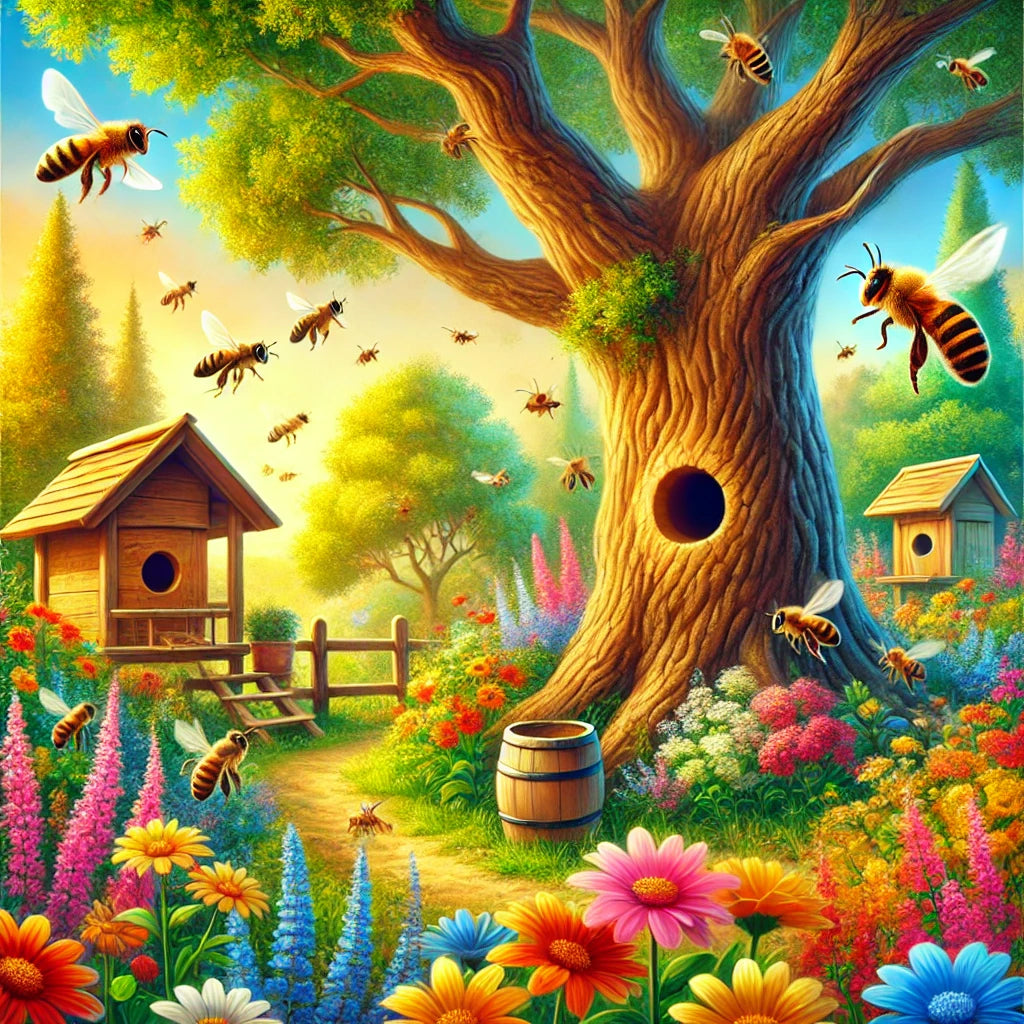When it comes to providing safe and secure homes for bees, you have two main options: bee tree homes and bee homes for the garden. Both offer unique advantages depending on the needs of your bee population and the environment in which they live. But which one is better suited for your bees?
Let’s explore the differences, advantages, and potential challenges of each, helping you make the best choice for supporting bee health and productivity.
Bee Tree Homes: A Natural Habitat
In the wild, bees often make their homes in hollow trees. These bee tree homes provide bees with the ideal shelter, offering protection from predators, weather conditions, and other natural threats. The thick walls of the tree act as natural insulation, keeping the hive warm in winter and cool in summer.
Bee tree homes can support the life cycle of bees by providing ample space for colonies to grow, as well as protection from outside disturbances. For wild bee colonies or beekeepers who prefer a more natural approach, bee tree homes are an excellent option.
Garden Bee Homes: A Convenient Alternative
On the other hand, bee homes for the garden are man-made structures designed to mimic the conditions of a natural bee habitat. These homes are often made of wood or bamboo and can be placed in your garden to attract bees, particularly solitary bees such as mason bees or leafcutter bees. These bee homes offer an accessible way for gardeners and beekeepers to support local pollinator populations.
For beginner beekeepers or those interested in boosting pollination in their gardens, how to start a bee farm with garden bee homes is simple. These homes can be strategically placed near flowers and plants to provide bees with shelter close to their food source.
Pros and Cons: Bee Tree Homes vs. Garden Bee Homes
- Bee Tree Homes offer bees a natural and protective habitat but are not always easy to find or establish in urban areas.
- Garden Bee Homes are convenient and easily placed in any backyard but may not offer the same level of protection as a tree hollow, especially in areas with harsh weather conditions.
Both options are beneficial, but the right choice depends on the bees you’re trying to support and the environment in which you live.
Supporting Bees in Your Environment
No matter which type of bee home you choose, you are contributing to the health and growth of bee populations. Bees are crucial for pollinating crops and flowers, and offering them a safe space to live increases their ability to thrive. The benefits of bees extend beyond pollination, as they help maintain the balance of ecosystems.
In urban areas, garden bee homes are often the most practical choice, offering bees a secure place to nest close to their food sources. However, if you have access to forested land, bee tree homes provide bees with a more natural living space.
Support Your Bee Colony with Swarm Commander
Ultimately, both bee tree homes and garden bee homes offer advantages for supporting bee populations. If you prefer a natural setup and have access to wooded areas, bee tree homes might be the best choice. For those in urban or suburban settings, garden bee homes are a convenient and effective option.
Whether you choose a bee tree home or a garden bee home, you can enhance your beekeeping experience with tools from Swarm Commander. Explore our range of products, including bee trap attractants, and give your bees the best shelter for their health and productivity.
Frequently Asked Questions About Bee Tree Homes and Garden Bee Homes
Q1. Are bee tree homes more natural for bees?
Yes, bee tree homes closely mimic the bees’ natural habitat, providing excellent insulation and protection from predators and weather conditions.
Q2. Can I easily manage a bee tree home?
Bee tree homes can be difficult to manage for beekeepers, especially when they are high up or hard to access. Garden bee homes are much easier for regular inspection and maintenance.
Q3. Are garden bee homes suitable for all types of bees?
Garden bee homes are versatile and can be customized to suit different species of bees. You can adjust the size, material, and design based on the needs of your bees.
Q4. What role do bees play in agriculture?
Bees are essential pollinators, playing a crucial role in the reproduction of many plants and crops. Their role in agriculture is vital for food production and biodiversity.
Q5. How can I attract bees to my garden bee home?
You can use bee trap attractants to lure bees into your garden bee home. These attractants mimic natural pheromones that bees use to find new homes.



